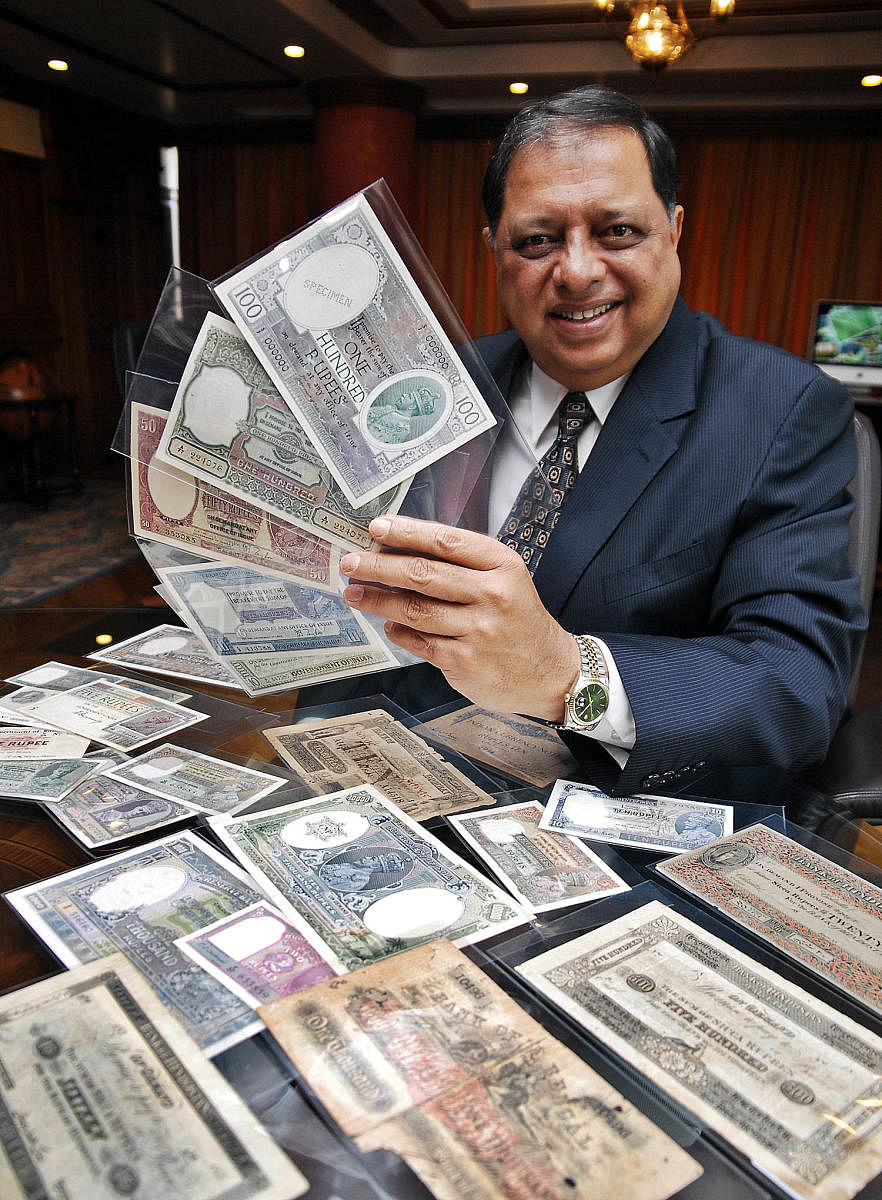
Perhaps the first currency museum in the country, ‘Rezwan Razack’s Museum of Indian Paper Money’, located on 2nd floor of Prestige Falcon Towers, will be inaugurated by Dr C Rangarajan, former Governor, Reserve Bank of India on February 15. It will be open for public viewing from February 17.
Owned by the world’s biggest collector of Indian paper money, Rezwan Razack, who is also the Co-Founder and Joint MD, Prestige Group, the museum will display a superlative selection of banknotes dating back to the early 1800s. It will also house early Private and Presidency Banks, including the uniface or one-sided notes attributed to the colonial Government of India. The portrait notes of British monarchs such as Queen Victoria, King George V and VI are present. India’s colonial history has been aptly documented in the notes from Portuguese India to French India.
Rezwan Razack tells Metrolife that his aim is to educate, inform and entertain people through this unusual medium, “This museum pertains to Indian paper money only. The notes on display are from 1812 till date and have the most comprehensive display of Indian paper money. It also includes cash coupons of princely states and coupons used in the prisoners of war camps, which is the most unusual thing.”
Indian notes used in Burma and Pakistan and rare notes used in the Persian Gulf States and by Haj pilgrims also find a place in this museum.
Rezwan informs that there’s a story behind each of the notes. He says the story of coupons is particularly interesting because it was given to prisoners of war who were not criminals. He explains that they were brought from Burma and other places where the British were in control of some of the camps that were set up in India.
“They were given coupons. They were also given money because they wanted to keep them busy. The
Britishers got the prisoners of war to construct schools, roads and build huge structures. Those days you couldn’t compel people to work, so money was given to motivate them,” explains Rezwan. He adds that these coupons could be exchanged in the canteen to buy things that were not a part of the ration like postcards, stamps and maybe cigarettes. “We have these coupons in the museum,” he adds.
Why was paper money used? Rezwan says, “Earlier, the rulers used to take people’s silver and gold and give them a piece of paper in return. This was used more for shifting money from one city to another. This made transactions easier.”
What were the challenges involved in gathering information? “There is hardly any information available online or otherwise. Fortunately, I was able to access substantial information at the British Library and Bank of England, London. The British Library allows researches and academics to access their files. They don’t allow you to take anything out but you can make references and cull out data,” shares Rezwan.
Rezwan feels the hobby of collecting currency notes has increased in stature, “There are many who have taken to this hobby and I attribute the increase to social media,” he adds. He hopes the opening of this museum will inspire more people to join the hobby.
Features of the museum
It is completely climate controlled.
The museum is curated without using any toxic or destructive materials that could deteriorate the artefact over time.
It is a great medium of education for visitors of all age groups as it narrates the history of India.
The museum has paper money from countries that colonised India namely British, French and the Portuguese.
Collected over 50 years
Rezwan’s collection has been built over 50 years with exhaustive research. He has also co-authored an encyclopedic book, ‘The Revised Standard Reference Guide to Indian Paper Money’ that was released in 2012. It is considered the bible for Indian paper money. In 2017, Rezwan authored a second book ‘One Rupee - One Hundred Years 1917-2017’ to mark the 100th Anniversary of the issue of the one rupee note in India.